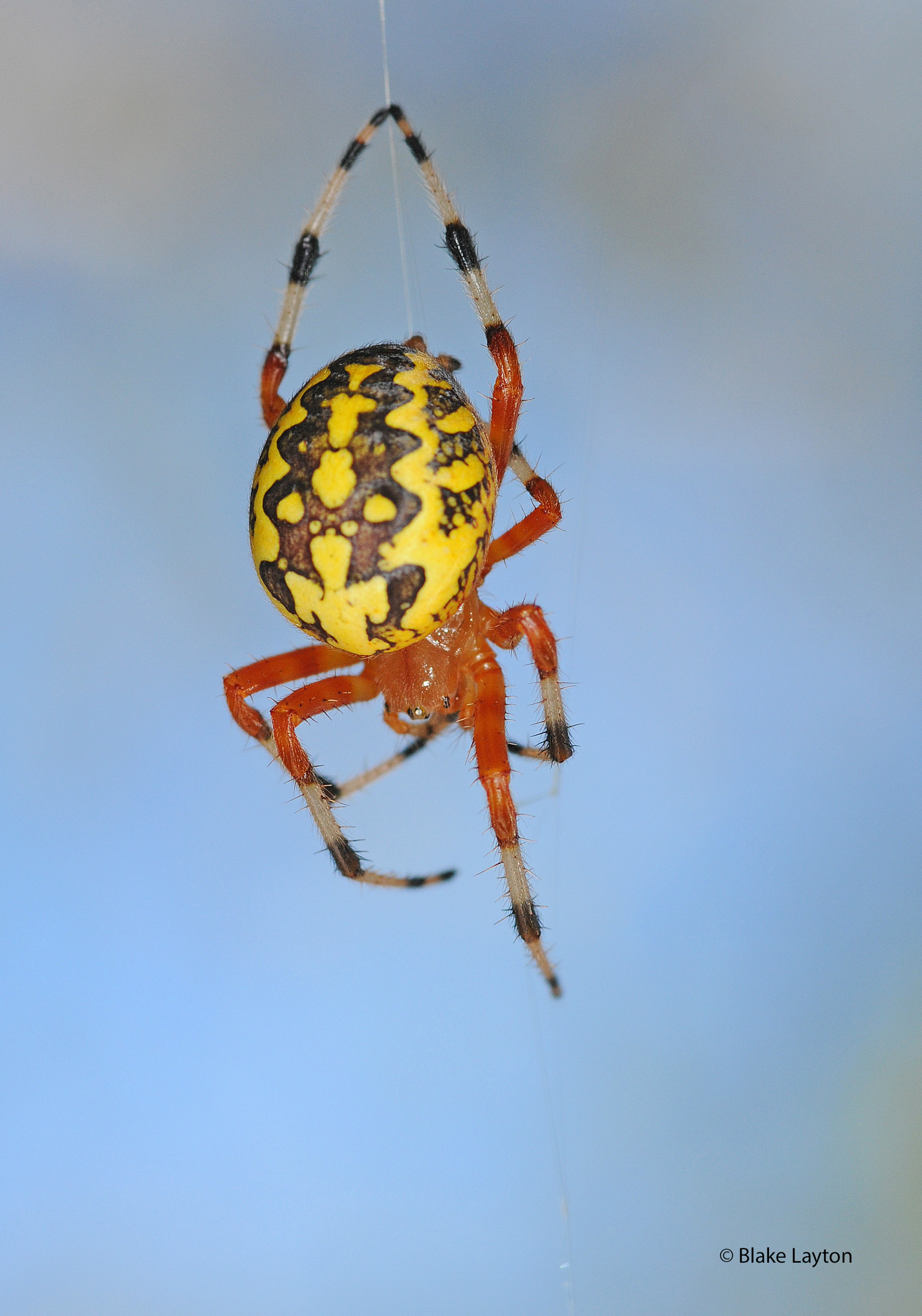Marbled Orb Weaver, Vol. 9, No. 31
Related News
March 16, 2016
October 1, 2015
July 10, 2015
June 29, 2015
June 17, 2015
Pages
Related Publications
Publication Number: P2765
Publication Number: P2825
Publication Number: P3346
Publication Number: P3367

 “We were out walking in the woods just before Halloween and ran into several big, round-bellied spiders that had their webs strung across the trail. Most were yellow, but our daughter found one that was pumpkin-colored—just perfect for Halloween. What kind of spiders are these, and why are they hanging out in the woods this time of year?”
“We were out walking in the woods just before Halloween and ran into several big, round-bellied spiders that had their webs strung across the trail. Most were yellow, but our daughter found one that was pumpkin-colored—just perfect for Halloween. What kind of spiders are these, and why are they hanging out in the woods this time of year?”